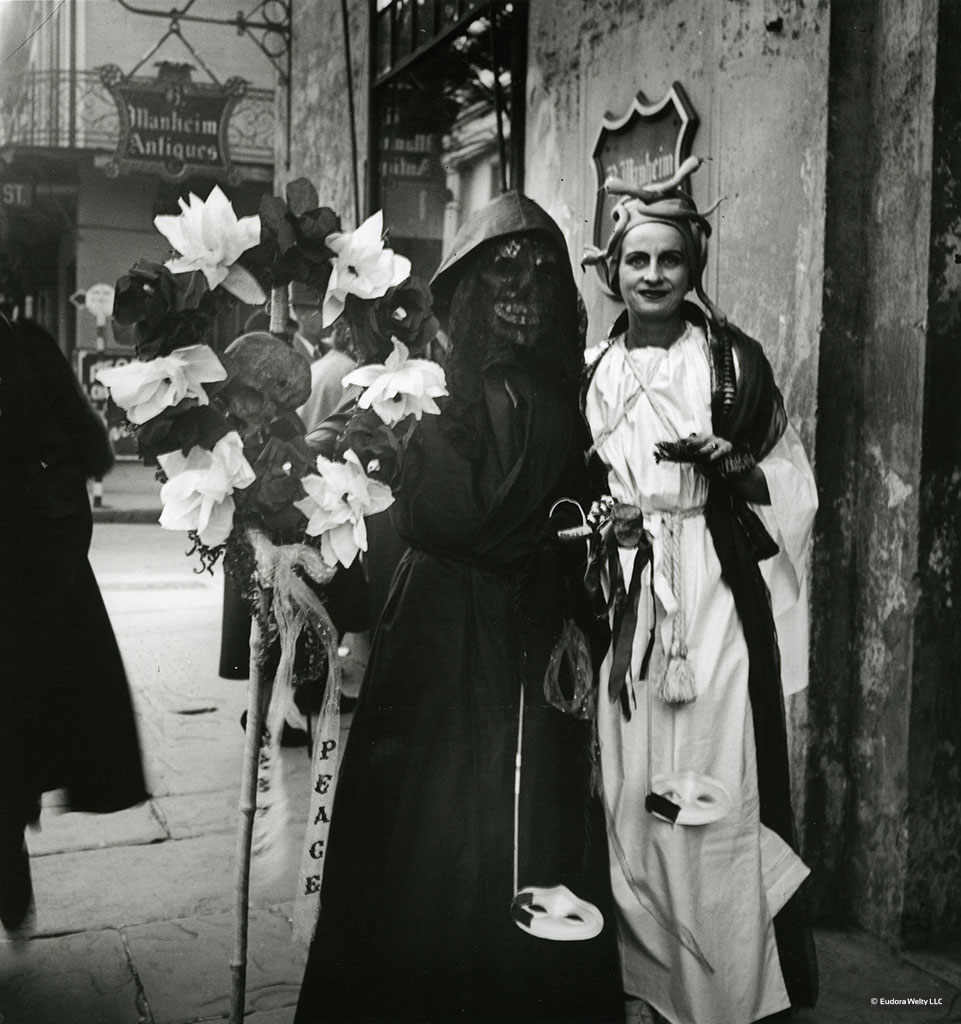

She was not deterred by not getting a job photographing scenes of government projects along with the now-famous WPA photographers Walker Evans, Dorothea Lange, Ben Shahn, and Marion Post Wolcott. Welty, we now understand, pursued photography as a legitimate career in equal earnest with the writing of fiction in the early 1930s. Importantly, Nelson portrays Welty as a photographer, alerting viewers of this significant talent of the award-wining writer.

Welty recognized the powerful metaphor of the eye when she titled her 1965 essay about Katherine Anne Porter, “The Eye of the Story.” The appropriateness of the metaphor might have rested had Welty not titled her collection of selected reviews and essays in 1971, "The Eye of the Story." Now we also have "Welty: The Eye of the Storyteller" (a collection of essays edited by Dawn Trouard, 1989), "A Writer’s Eye: Collected Book Reviews" by Welty (1993), and my own 2014 book "A Tyrannous Eye: Eudora Welty’s Nonfiction and Photographs."

Something extraordinary like a bridegroom who is also a robber, or a wedding of the daughter of the plantation patriarch to his hired man, or Natalie Nelson drilling in on Welty taking a self-portrait, or us gathering to read, laugh, see anew one of the 20th century’s finest writers. Indeed, as soon as the least of us stands still, that is the moment something extraordinary is seen to be going on in the world” The act of focusing itself has beauty and meaning it is the act that, continued in, turns into meditation, into poetry.

Focus then means awareness, discernment, order, clarity, insight-they are the attributes of love. “It may be that place can focus the gigantic, voracious eye of genius and bring its gaze to point. She does so, she explains, by rooting her characters in place, and. With her generous, observant, discerning eye, Welty sees the complexity of human relationships and shows this turmoil to readers of her writing and viewers of her photographs. But we should be aware that in looking at Nelson’s painting, we are being seen by Welty as well. This digression emanates from my seeing artist Natalie Nelson seeing Welty peering into her living room mirror, using her camera as a mechanical eye to take a selfie so that observers might see, oddly enough, exactly what Welty sees. Aha! The grown-ups and the brood of children in Delta Wedding “look with kindling eyes at all the turmoil, expecting delight” from the generations of siblings and cousins all falling together for the week of the harvest-time wedding of the prize daughter to the red-haired overseer, just as one might look on a crawling, mewing, jumble of kittens. The fourth definition is “to be stirred up rise” out of the Old Norse to Middle English, “to give birth to, to cause.” Of course, I was digressing from my assignment here, but while I was there in the dictionary, I noticed that a kindle is also a litter of kittens and the verb “kindle” in this sense is to give birth, especially to rabbits. They were shocked only at disappointment.” Kindling eyes? My own eyes were arrested at this strange and confusing adjective, and so I searched my American Heritage dictionary where my faith and trust in Welty’s deliberate choices were rewarded. But in "Delta Wedding," I came across this curious line: “The grown people, like the children, looked with kindling eyes at all turmoil, expecting delight for themselves and for you. There I found loving, seeking, swimming, opening, shutting, flickering, cutting, forgetful, slumberous, mischievous, soft, weak, wide, long, grey, hazel, dark-blue, red, or lighted eyes. Maybe this is to be expected, so I checked the next novel, "Delta Wedding" (1946). Her first novel, "The Robber Bridegroom" (1942), which she alternately called a “Fairy Tale of the Natchez Trace,” is replete with blinking, sleeping, batting, shining, rolling eyes - eyes that are yellow, somnolent, large, worldly, sharp, or tearful. Eudora Welty has always had an eye for eyes.


 0 kommentar(er)
0 kommentar(er)
